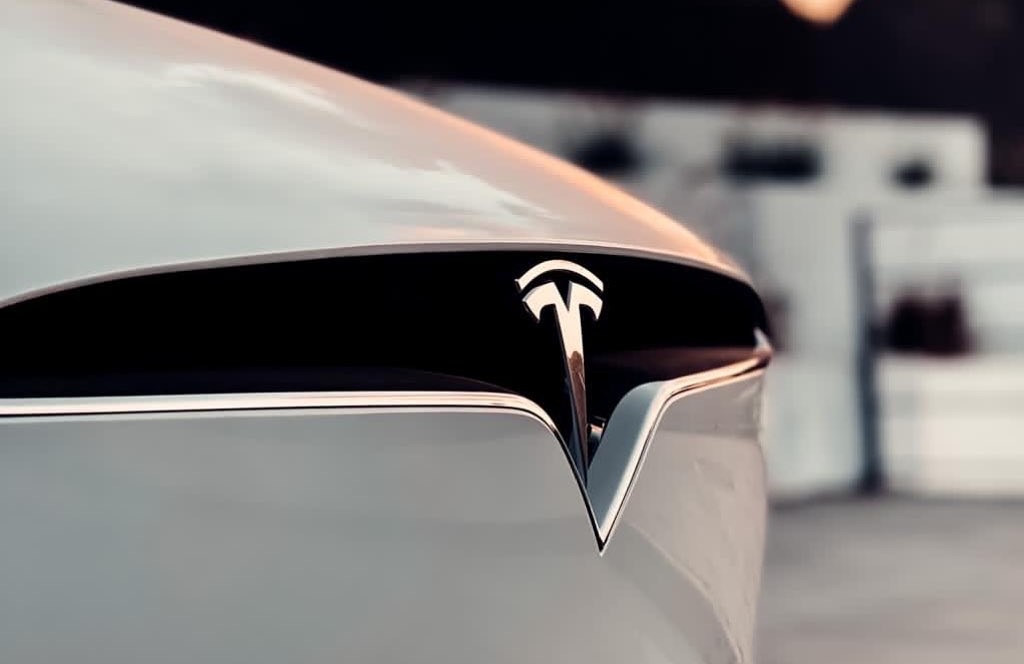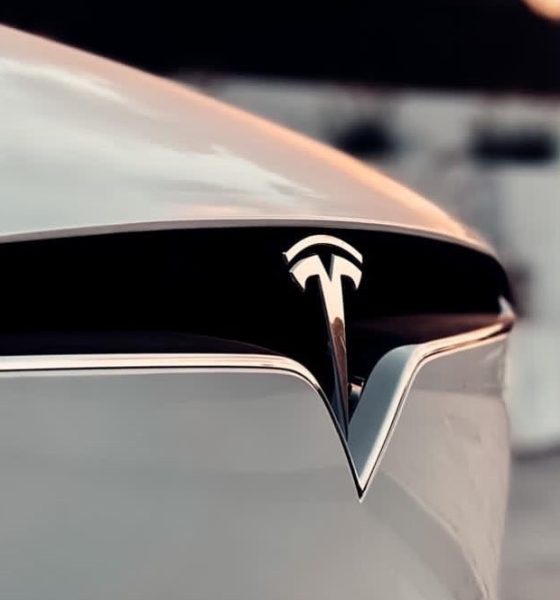

Investor's Corner
Tesla a ‘flagship holding’ despite Gigafactory unpredictability: Piper Sandler
Tesla (NASDAQ: TSLA) is a “flagship holding” for Piper Sandler analyst Alexander Potter, who indicated the all-electric automaker’s stock is simply a must-have following the impressive delivery and production numbers the company reported late last week. Even with unpredictability and uncertainty regarding its upcoming Gigafactories, Tesla is still primed to be a big winner in the savvy EV sector moving forward, Potter said in a note.
Tesla reported 184,800 deliveries during Q1 2021, an impressive feat that peaked over Wall Street’s consensus for what was expected in the new year’s introductory quarter. Potter highlights this in a note to investors, where he indicated the Wall Street estimates were bested by Tesla’s real-life performance by over 10,000 units. Apparently avoiding bottlenecks that plagued other automakers with production delays, like the global semiconductor shortage, Tesla seemed to “sidestep” these issues in Q1, bringing together a quickly accelerating production push of its two mass-market vehicles to deliver impressive figures that no analyst could have predicted.
“Tesla apparently sidestepped the semiconductor shortages, battery bottlenecks, and shipping delays that plagued many other automakers during Q1,” Potter wrote, according to TheStreet. Still, the impressiveness of Tesla’s Q1 cannot completely be attributed to the company’s evident ability to defy all odds, even with supply shortages. The more impressive factor was the fact that Tesla was able to accomplish such a monumental quarter while navigating the absence of two of its vehicles: the Model S and the Model X, which are the subject of focus moving into Q2.
While the Model 3 and Model Y continue to gain popularity across the world, the Model S and Model X remain absent from Tesla’s current lineup of deliverable vehicles. Despite the company delivering a few thousand units of the flagship S and X vehicles thanks to inventory, the cars didn’t contribute very much. This is an expectation CEO Elon Musk highlighted several years ago during an Earnings Call, where he said the S and X were still produced for “sentimental reasons.”
Tesla’s Q1 ’21 Deliveries prove Elon Musk was right about the Model S and X in 2019
Despite the company’s inability to scrap its two luxury models, the Model S and Model X were the most recent focus of Tesla’s “refresh” project that spread across all four of its electric models over the past eight months. The Model 3 and Model Y underwent very minor cosmetic changes, while the Model S and Model X were basically overhauled and redesigned on the inside. Slight exterior changes were also spotted upon the vehicle’s first sightings at the Tesla Fremont Factory, but the interior design rehabilitation took center stage when Tesla released images during the Q4 2020 Earnings Call in late January.
Potter believes that S and X deliveries would have increased Tesla’s Q1 2021 delivery figures by around 15,000 units, giving Tesla a massive 200,000+ delivery quarter. The concerns from the Piper Sandler analyst do not have to do with the uncertainty regarding Model S and Model X deliveries to customers, but rather the unexpected delays that Gigafactory projects are experiencing. While Tesla has been extremely vocal regarding the first production dates of its upcoming manufacturing plants, Potter believes that uncertainty with Tesla’s other models could translate to some delays at Giga Texas and Giga Berlin, but it’s not making the analyst change his outlook on the electric automaker.
“We still think these new factories could cause margin pressure, delivery delays, and temporary multiple compression,” Potter said, “but we don’t want to overthink things: TSLA is a flagship holding, and we would own the shares.“
Tesla Giga Berlin is slated to begin production of the Model Y later this Summer, while Giga Texas timeframes remain uncertain at the present time. Tesla planned on Giga Texas being able to produce and deliver the first Cybertruck units by the end of 2021, but Musk recently told Joe Rogan that the company will accomplish this if they’re lucky.
“If we get lucky, we’ll be able to do a few deliveries toward the end of this year, but I expect volume production to be in 2022,” Musk said.
Alex Potter holds an average return of 34.2% and a nearly 5-star rating. He is ranked #328 out of over 7,400 analysts on TipRanks.com.
Disclosure: Joey Klender is a TSLA Shareholder.

Investor's Corner
Tesla stock closes at all-time high on heels of Robotaxi progress

Tesla stock (NASDAQ: TSLA) closed at an all-time high on Tuesday, jumping over 3 percent during the day and finishing at $489.88.
The price beats the previous record close, which was $479.86.
Shares have had a crazy year, dipping more than 40 percent from the start of the year. The stock then started to recover once again around late April, when its price started to climb back up from the low $200 level.
This week, Tesla started to climb toward its highest levels ever, as it was revealed on Sunday that the company was testing driverless Robotaxis in Austin. The spike in value pushed the company’s valuation to $1.63 trillion.
Tesla Robotaxi goes driverless as Musk confirms Safety Monitor removal testing
It is the seventh-most valuable company on the market currently, trailing Nvidia, Apple, Alphabet (Google), Microsoft, Amazon, and Meta.
Shares closed up $14.57 today, up over 3 percent.
The stock has gone through a lot this year, as previously mentioned. Shares tumbled in Q1 due to CEO Elon Musk’s involvement with the Department of Government Efficiency (DOGE), which pulled his attention away from his companies and left a major overhang on their valuations.
However, things started to rebound halfway through the year, and as the government started to phase out the $7,500 tax credit, demand spiked as consumers tried to take advantage of it.
Q3 deliveries were the highest in company history, and Tesla responded to the loss of the tax credit with the launch of the Model 3 and Model Y Standard.
Additionally, analysts have announced high expectations this week for the company on Wall Street as Robotaxi continues to be the focus. With autonomy within Tesla’s sights, things are moving in the direction of Robotaxi being a major catalyst for growth on the Street in the coming year.
Elon Musk
Tesla needs to come through on this one Robotaxi metric, analyst says
“We think the key focus from here will be how fast Tesla can scale driverless operations (including if Tesla’s approach to software/hardware allows it to scale significantly faster than competitors, as the company has argued), and on profitability.”

Tesla needs to come through on this one Robotaxi metric, Mark Delaney of Goldman Sachs says.
Tesla is in the process of rolling out its Robotaxi platform to areas outside of Austin and the California Bay Area. It has plans to launch in five additional cities, including Houston, Dallas, Miami, Las Vegas, and Phoenix.
However, the company’s expansion is not what the focus needs to be, according to Delaney. It’s the speed of deployment.
The analyst said:
“We think the key focus from here will be how fast Tesla can scale driverless operations (including if Tesla’s approach to software/hardware allows it to scale significantly faster than competitors, as the company has argued), and on profitability.”
Profitability will come as the Robotaxi fleet expands. Making that money will be dependent on when Tesla can initiate rides in more areas, giving more customers access to the program.
There are some additional things that the company needs to make happen ahead of the major Robotaxi expansion, one of those things is launching driverless rides in Austin, the first city in which it launched the program.
This week, Tesla started testing driverless Robotaxi rides in Austin, as two different Model Y units were spotted with no occupants, a huge step in the company’s plans for the ride-sharing platform.
Tesla Robotaxi goes driverless as Musk confirms Safety Monitor removal testing
CEO Elon Musk has been hoping to remove Safety Monitors from Robotaxis in Austin for several months, first mentioning the plan to have them out by the end of 2025 in September. He confirmed on Sunday that Tesla had officially removed vehicle occupants and started testing truly unsupervised rides.
Although Safety Monitors in Austin have been sitting in the passenger’s seat, they have still had the ability to override things in case of an emergency. After all, the ultimate goal was safety and avoiding any accidents or injuries.
Goldman Sachs reiterated its ‘Neutral’ rating and its $400 price target. Delaney said, “Tesla is making progress with its autonomous technology,” and recent developments make it evident that this is true.
Investor's Corner
Tesla gets bold Robotaxi prediction from Wall Street firm
Last week, Andrew Percoco took over Tesla analysis for Morgan Stanley from Adam Jonas, who covered the stock for years. Percoco seems to be less optimistic and bullish on Tesla shares, while still being fair and balanced in his analysis.

Tesla (NASDAQ: TSLA) received a bold Robotaxi prediction from Morgan Stanley, which anticipates a dramatic increase in the size of the company’s autonomous ride-hailing suite in the coming years.
Last week, Andrew Percoco took over Tesla analysis for Morgan Stanley from Adam Jonas, who covered the stock for years. Percoco seems to be less optimistic and bullish on Tesla shares, while still being fair and balanced in his analysis.
Percoco dug into the Robotaxi fleet and its expansion in the coming years in his latest note, released on Tuesday. The firm expects Tesla to increase the Robotaxi fleet size to 1,000 vehicles in 2026. However, that’s small-scale compared to what they expect from Tesla in a decade.
Tesla expands Robotaxi app access once again, this time on a global scale
By 2035, Morgan Stanley believes there will be one million Robotaxis on the road across multiple cities, a major jump and a considerable fleet size. We assume this means the fleet of vehicles Tesla will operate internally, and not including passenger-owned vehicles that could be added through software updates.
He also listed three specific catalysts that investors should pay attention to, as these will represent the company being on track to achieve its Robotaxi dreams:
- Opening Robotaxi to the public without a Safety Monitor. Timing is unclear, but it appears that Tesla is getting closer by the day.
- Improvement in safety metrics without the Safety Monitor. Tesla’s ability to improve its safety metrics as it scales miles driven without the Safety Monitor is imperative as it looks to scale in new states and cities in 2026.
- Cybercab start of production, targeted for April 2026. Tesla’s Cybercab is a purpose-built vehicle (no steering wheel or pedals, only two seats) that is expected to be produced through its state-of-the-art unboxed manufacturing process, offering further cost reductions and thus accelerating adoption over time.
Robotaxi stands to be one of Tesla’s most significant revenue contributors, especially as the company plans to continue expanding its ride-hailing service across the world in the coming years.
Its current deployment strategy is controlled and conservative to avoid any drastic and potentially program-ruining incidents.
So far, the program, which is active in Austin and the California Bay Area, has been widely successful.








